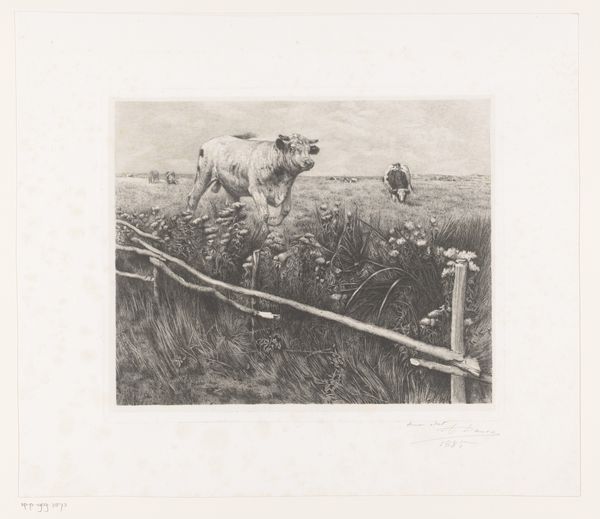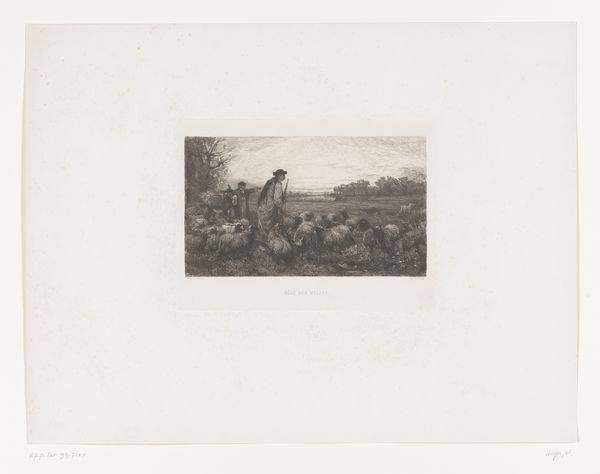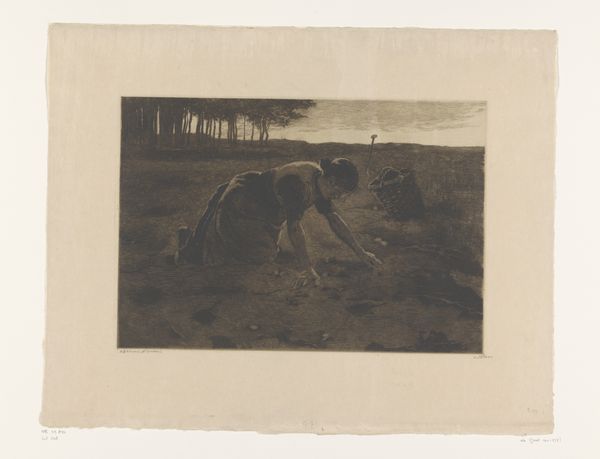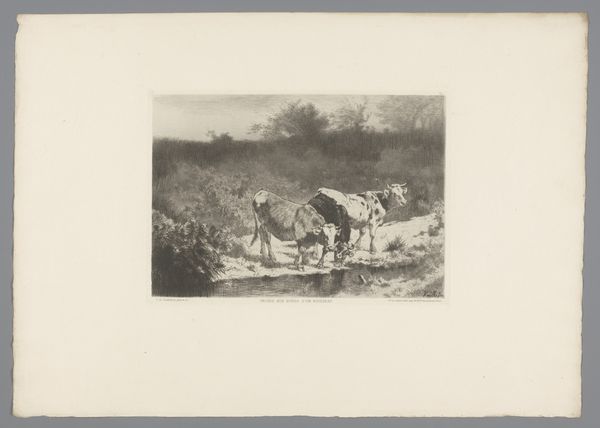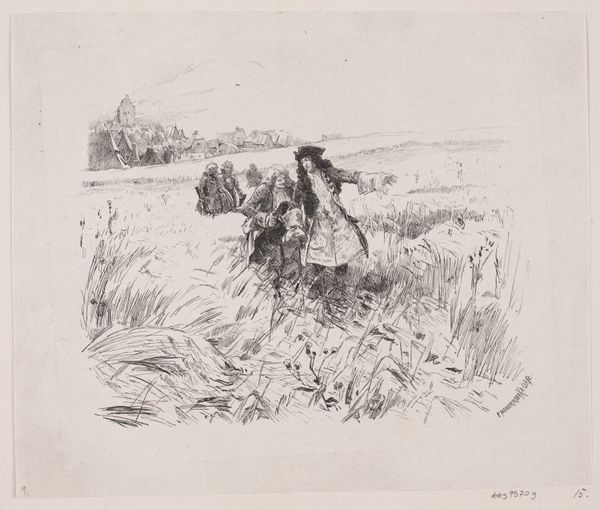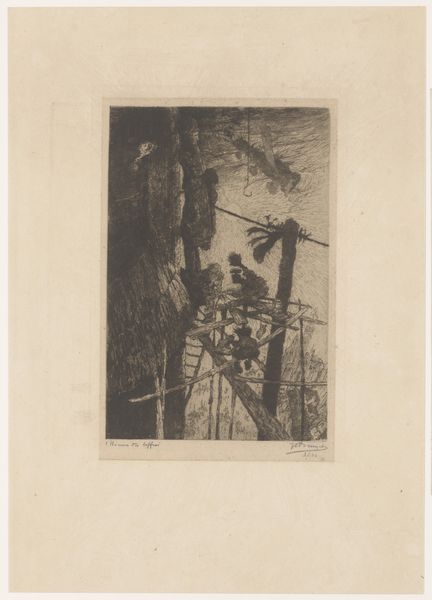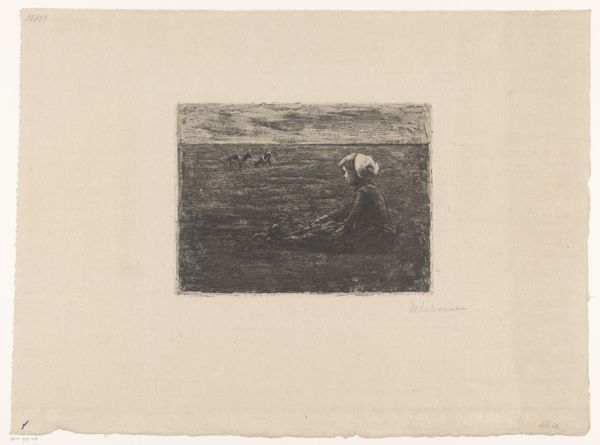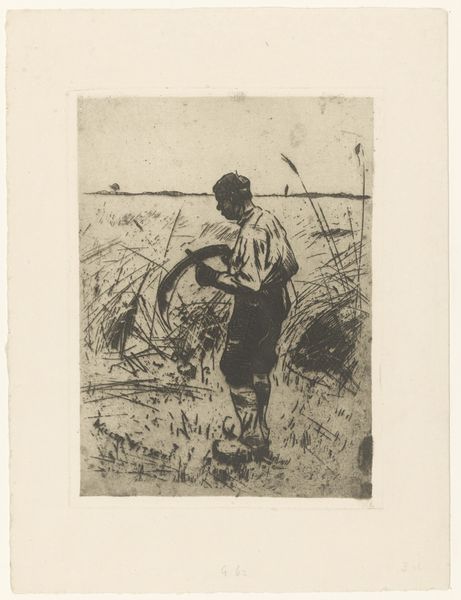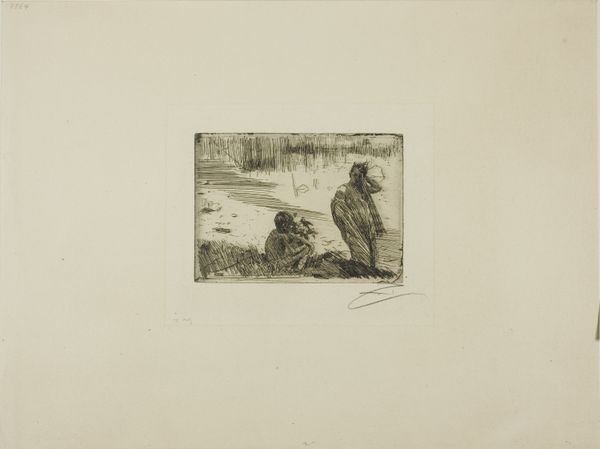
print, etching
# print
#
etching
#
landscape
#
genre-painting
#
realism
Dimensions: height 271 mm, width 323 mm
Copyright: Rijks Museum: Open Domain
Curator: It's an image that strikes me as both idyllic and grounded, like a scene from a novel, evoking pastoral nostalgia. Editor: Indeed, "Cows and a Bull in the Meadow," etched by Auguste Danse around 1885, is such a compelling snapshot of rural life. The Rijksmuseum holds this piece, an example of the artist's realist style through the lens of printmaking. Curator: The composition guides your eye immediately to the fore, that imposing bull seems to dominate. But there's a softness in the etched lines, a quiet intimacy to the landscape, softened even further through the foreground vegetation blurring up in the image space. I wonder how this aesthetic serves to represent the socio-political landscape it emerged from? Editor: That's perceptive. It appeared in an era when artists explored the public role of imagery in shaping national identity and understanding the value of labour, you see. Danse's focus on livestock isn't merely aesthetic; it implicitly recognizes agrarian labour central to the burgeoning socio-political climate in Europe during that time. Curator: This challenges the viewer, then. It is far more than an everyday scene but an examination into identity and power. That sturdy fence introduces a narrative—one of division and enclosure, of owned spaces. In looking at it that way, it transforms our understanding. We become increasingly critical in our gaze, examining how it might reflect on land rights or labour inequalities in that era. Editor: Precisely. Even the seemingly neutral act of depicting cows has historical and social implications when viewed in relation to societal structure. This particular image would not have been removed from the artistic climate it emerged from. The public display, the conversations fostered—it would all serve a greater purpose of shaping understanding. Curator: So, this is more than just a peaceful pasture—it's a silent dialogue on power and representation within its socio-political context. Fascinating how art prompts reflection, doesn't it? Editor: It really does. I find I look at rural scenes quite differently now, conscious of layers previously unseen, beneath.
Comments
No comments
Be the first to comment and join the conversation on the ultimate creative platform.
